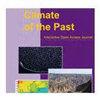Climate influences on sea salt variability at Mount Brown South, East Antarctica
IF 3.2
2区 地球科学
Q1 GEOSCIENCES, MULTIDISCIPLINARY
引用次数: 0
Abstract
Abstract. The Mount Brown South (MBS) ice core in East Antarctica (69° S, 86° E) has produced records of sea salt concentration and snow accumulation for examining past climate. In a previous study, the sea salt concentration, but not snow accumulation, showed a significant, positive relationship with the El Niño-Southern Oscillation (ENSO) from June to November. Here, we use observations and reanalysis data to provide insights into the mechanisms modulating this previously identified relationship for the austral winter season (June-August). A teleconnection between the tropical Pacific and high-latitude winds in the vicinity of MBS is identified. Specifically, El Niño events are related to strengthened westerly winds ∼60° S, leading to more local sea ice via anomalous Ekman transport in an area to the northeast of the MBS site. Impacts from La Niña are less obvious, showing that there is a non-linear component to this relationship. MBS is a wet deposition site, and we show that sea salt is likely transported from northeast of MBS via synoptic-scale storms that accompany high precipitation events. These storms and their associated precipitation, show no substantial differences between years of high and low sea salt concentration, so we suggest it is the source of sea salt that differs, rather than the transport mechanism. El Niño-associated strengthened westerly winds in the MBS region could enhance sea salt availability by increasing ocean aerosol spray and/or by increasing sea ice formation, both of which can act as sources of sea salt. This may explain why sea salt concentration, rather than snow accumulation, is most closely related to ENSO variability in the ice core record. Identifying the mechanisms modulating key variables such as sea salts and snow accumulation at ice core sites provides further insights into what these valuable records can decipher about climate variability in the pre-instrumental period.气候对南极洲东部布朗南山海盐变化的影响
摘要南极洲东部(南纬 69°,东经 86°)的布朗南山(MBS)冰芯产生了海盐浓度和积雪记录,用于研究过去的气候。在之前的一项研究中,海盐浓度(而非积雪)与 6 月至 11 月的厄尔尼诺-南方涛动(ENSO)呈显著的正相关关系。在此,我们利用观测数据和再分析数据,深入探讨了在澳大利亚冬季(6 月至 8 月)调节这一先前确定的关系的机制。我们确定了热带太平洋与地中海盆地附近高纬度风之间的远距离联系。具体来说,厄尔尼诺现象与南纬 60°的西风增强有关,通过在马斯河流域站点东北部地区的异常埃克曼输送,导致当地海冰增加。拉尼娜现象的影响不太明显,表明这种关系存在非线性因素。马斯河流域是一个湿沉积区,我们的研究表明,海盐很可能是通过伴随高降水事件出现的同步尺度风暴从马斯河流域东北部输送过来的。这些风暴及其相关降水在海盐浓度高年和低年之间没有实质性差异,因此我们认为是海盐的来源不同,而不是传输机制不同。厄尔尼诺现象引起的地中海流域西风增强可能会增加海洋气溶胶喷雾和/或增加海冰的形成,从而增加海盐的供应,而这两者都可以成为海盐的来源。这也许可以解释为什么在冰芯记录中,海盐浓度而不是积雪与厄尔尼诺/南方涛动的变化关系最为密切。确定冰芯地点的海盐和积雪等关键变量的调节机制,有助于进一步了解这些宝贵的记录能够解读仪器观测前时期的气候变异性。
本文章由计算机程序翻译,如有差异,请以英文原文为准。
求助全文
约1分钟内获得全文
求助全文
来源期刊

Climate of The Past
地学-气象与大气科学
CiteScore
7.40
自引率
14.00%
发文量
120
审稿时长
4-8 weeks
期刊介绍:
Climate of the Past (CP) is a not-for-profit international scientific journal dedicated to the publication and discussion of research articles, short communications, and review papers on the climate history of the Earth. CP covers all temporal scales of climate change and variability, from geological time through to multidecadal studies of the last century. Studies focusing mainly on present and future climate are not within scope.
The main subject areas are the following:
reconstructions of past climate based on instrumental and historical data as well as proxy data from marine and terrestrial (including ice) archives;
development and validation of new proxies, improvements of the precision and accuracy of proxy data;
theoretical and empirical studies of processes in and feedback mechanisms between all climate system components in relation to past climate change on all space scales and timescales;
simulation of past climate and model-based interpretation of palaeoclimate data for a better understanding of present and future climate variability and climate change.
 求助内容:
求助内容: 应助结果提醒方式:
应助结果提醒方式:


